The Op art movement, short for Optical art, emerged in the mid-20th century as a visual phenomenon that played tricks on the eye, challenging traditional notions of perception and representation.
What type of art was created during the Op Art movement?
Print patterns, pulp illustrations, poster art and illusions were made in the Op or Optical Art Movement.
Op Art was created and popular during which years?
In the 1960s, the Op Art Movement became popular but some early works date back to the late 1930s.
Where was Op Art made and popularised?
Europe and the USA are where the Op Art movement began and became popular.
What medium (media) and tools were used to make Op Art pieces?
Print techniques like silkscreen, block printing and digital prints that stimulate the eye were used in Op Art.
Who are some famous Op Art artists and artworks?
Blaze by Bridget Riley
Plus Reversed by Richard Anuskiewicz
Exhibition of Galerie Mitterrand by Peter Kogler
Interesting observations about the Op Art movement – Art Op-Ed
If you are an ’80s or ’90s kid, you probably remember staring for hours on end at the magic-eye poster. And why did we do this? To spot the dinosaur of course! For a while, we looked like professional art curators who were engrossed in examining the artistic expression of a painting. This is exactly what the Optical or Op Art movement did. It made art enthusiasts of us all. Getting carried away by the visual trickery left us in awe of these masters of illusion. And just like that, for the first time, we had an art movement that even kids were fascinated by. This is what made the Op Art movement, one of the most universal movements.
Which art movement(s) came before the Op Art movement?
Pop Art and Bauhaus came before the Op Art movement.
Which art movement(s) came after the Op Art movement?
Minimalism and Concept art came after the Op Art movement
Top 10 artworks of the Op Art Movement
“Over” by Bridget Riley (1966): A Cascade of Illusions
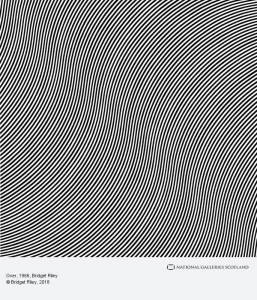
Bridget Riley, a luminary of the Op art movement, crafted “Over” in 1966, a work that epitomises the mesmerising power of optical illusions. The painting, characterised by a cascade of undulating black and white lines, creates a dynamic sense of movement. As viewers engage with “Over,” they are pulled into a hypnotic dance of shapes and shades, experiencing the ebb and flow of visual perception.
“Movement in Squares” by Bridget Riley (1961): The Birth of Op Art

“Movement in Squares,” birthed in 1961, is a pioneering work that catapulted Bridget Riley into the vanguard of the Op art movement. The canvas, adorned with a grid of alternating black and white squares, generates a dynamic visual experience. Riley’s optical arrangement of squares creates the illusion of both movement and depth, challenging the viewer’s sense of space.
“Kezdi-Ga” by Victor Vasarely (1970): The Grandeur of Geometric Abstraction
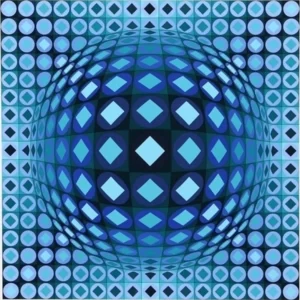
Victor Vasarely often hailed as the father of Op art, created “Kezdi-Ga” in 1970, a masterpiece that embodies the grandeur of geometric abstraction. The painting features a mesmerising array of interlocking squares, each pulsating with optical vibrancy. Vasarely’s arrangement of forms creates a sense of depth and movement, inviting viewers into a world where geometric precision converges with optical enchantment.
“Movimenti Percettivi” by Ferruccio Gard: Dynamic Rhythms in Monochrome
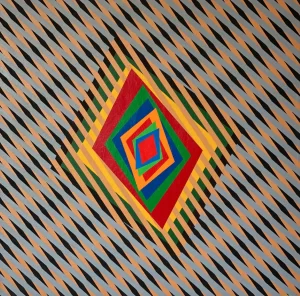
Ferruccio Gard’s “Movimenti Percettivi” is a masterpiece that fuses monochrome aesthetics with dynamic optical rhythms. This Op art gem, created during the movement’s heyday, features a carefully orchestrated play of lines and forms that give the impression of perpetual motion. Gard’s contribution to the Op art canon lies in his ability to infuse monochrome canvases with a pulsating sense of life.
“Blaze” by Bridget Riley: The Fiery Tapestry of Optical Illusion

Bridget Riley’s “Blaze” stands as a testament to her enduring mastery of Op art. Crafted with precision, “Blaze” features a vibrant tapestry of colour that dances across the canvas, creating the illusion of flames in perpetual motion. Riley’s clever arrangement of shapes and hues transforms the two-dimensional surface into a dynamic playground for the eyes.
“Plus Reversed” by Richard Anuskiewicz: A Symphony of Positive and Negative Space
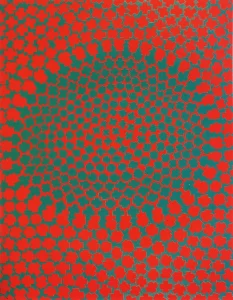
Richard Anuskiewicz’s “Plus Reversed” is a masterclass in the interplay of positive and negative space. Crafted with precision, the painting features a series of vibrant, interlocking plus signs that create a mesmerising sense of depth. Anuskiewicz’s exploration of optical effects transforms the canvas into a dynamic field of visual play.
“Exhibition of Galerie Mitterrand” by Peter Kogler: Immersive Environments in Op Art

Peter Kogler, known for his pioneering work in immersive environments, crafted “Exhibition of Galerie Mitterrand” as a testament to the transformative power of Op art installations. This work, created in collaboration with Galerie Mitterrand, transforms gallery spaces into optical wonderlands, where walls become undulating canvases that challenge traditional notions of perspective.
“Zebras” by Victor Vasarely (1938): Early Explorations in Optical Illusion
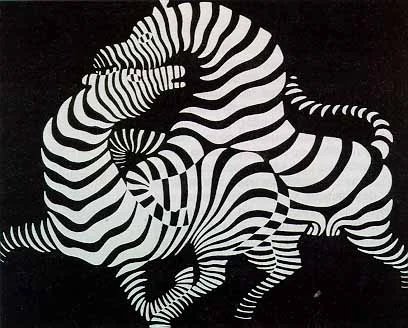
Victor Vasarely’s “Zebras” stands as a testament to his early experiments with optical illusion. Crafted in 1938, this early masterpiece showcases Vasarely’s fascination with dynamic patterns and visual ambiguity. The canvas, adorned with a grid of zebras, challenges viewers to discern the boundaries between figure and ground, creating a visual puzzle that foreshadows Vasarely’s later contributions to the Op art movement.
“La Lune” by Bridget Riley: Celestial Rhythms on Canvas
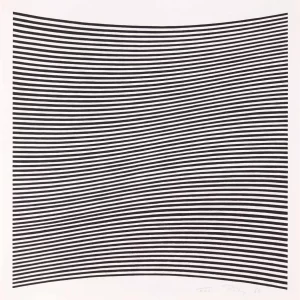
Bridget Riley’s “La Lune” is a celestial masterpiece that explores the rhythmic interplay of light and form. Crafted with precision, the painting features a series of concentric circles that create the illusion of celestial bodies in motion. Riley’s ability to evoke the ethereal through optical illusion is showcased in “La Lune,” where the canvas becomes a portal to a cosmic dance.
“Colour Cycle 3” by Peter Sedgley: Harmonies of Chromatic Progression

Peter Sedgley’s “Colour Cycle 3” is a testament to the harmonies of chromatic progression within the Op art movement. Crafted with an expert understanding of colour theory, the painting features a sequence of chromatic circles that create the illusion of perpetual motion. Sedgley’s contribution to Op art lies in his ability to infuse dynamic energy into static canvases through the strategic use of colour.
This curated collection of Op art masterpieces highlights the intricate stories and inspirations behind each stroke of the artist’s brush. As viewers engage with these iconic works, they become participants in a dance of perception. This is where the boundaries between reality and illusion blur. The canvas becomes a portal to a world where art is not merely observed but experienced in all its dynamic splendour.
*Images from Wiki Commons







0 Comments